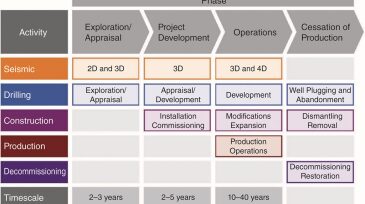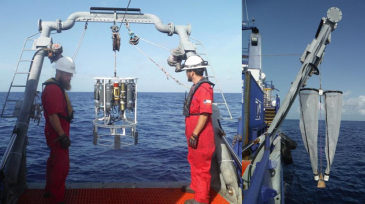Environment
This research aims to harness the advanced capabilities of artificial intelligence, specifically deep learning and large language models, to develop a comprehensive system for detecting and explaining oil spills.
This paper presents a physics-informed machine learning method that enhances the accuracy of pressure transient analysis, predicting reservoir properties to enhance waste slurry injection and waste disposal.
This paper presents a novel workflow with multiobjective optimization techniques to assess the integration of pressure-management methodologies for permanent geological carbon dioxide storage in saline aquifers.
-
The International Association of Oil and Gas Producers has released the second edition of its “Environmental Management in the Upstream Oil and Gas Industry” report. For this edition, IPIECA, the oil and gas industry group focused on environmental and social concerns, has added its expertise.
-
Thousands of oil and gas operations, government facilities, and other sites won permission to stop monitoring for hazardous emissions or otherwise bypass rules intended to protect health and the environment because of the coronavirus outbreak, The Associated Press has found.
-
Using an underwater remotely operated vehicle, activists on board the Greenpeace ship Esperanza documented a large methane leak in the North Sea caused by a major blowout during an oil drilling operation 30 years ago.
-
Reported greenhouse-gas emissions from Canada’s oil patch have more than doubled in the year’s first half as changes to how they are measured revealed a more extensive picture of environmental damage, previously unreported industry data show.
-
The area has a potential for up to 11.8 million bbl of recoverable oil reserves. The program aims to keep oil flowing in the Trans-Alaska Pipeline System, which has seen dwindling throughput since 1988.
-
New Mexico has proposed rules that would require its oil and gas industry to capture at least 98% of its emissions of the powerful greenhouse gas methane by 2026, a standard it said would be among the strongest in the nation.
-
The 10,000 mirrors arrayed around the Crescent Dunes Solar Energy plant are striking and seem to suggest the concept is on a path to efficient and reliable renewable energy. But, recently, the plant’s operator threw in the towel and filed for Chapter 11 bankruptcy protection. So, what went wrong?
-
Intertek announced the first certification awarded under its new CarbonClear independent upstream carbon intensity certification program. The certification was awarded to Lundin Energy for its Edvard Grieg field in the central North Sea.
-
The complete paper describes the development of, and summarizes the major changes and additions to, the Environmental Management in the Oil and Gas Industry guide.
-
The EPSO surveys were completed offshore Mexico for Total and Cairn in compliance with requirements of Mexico’s National Agency for Safety, Energy, and Environment.













